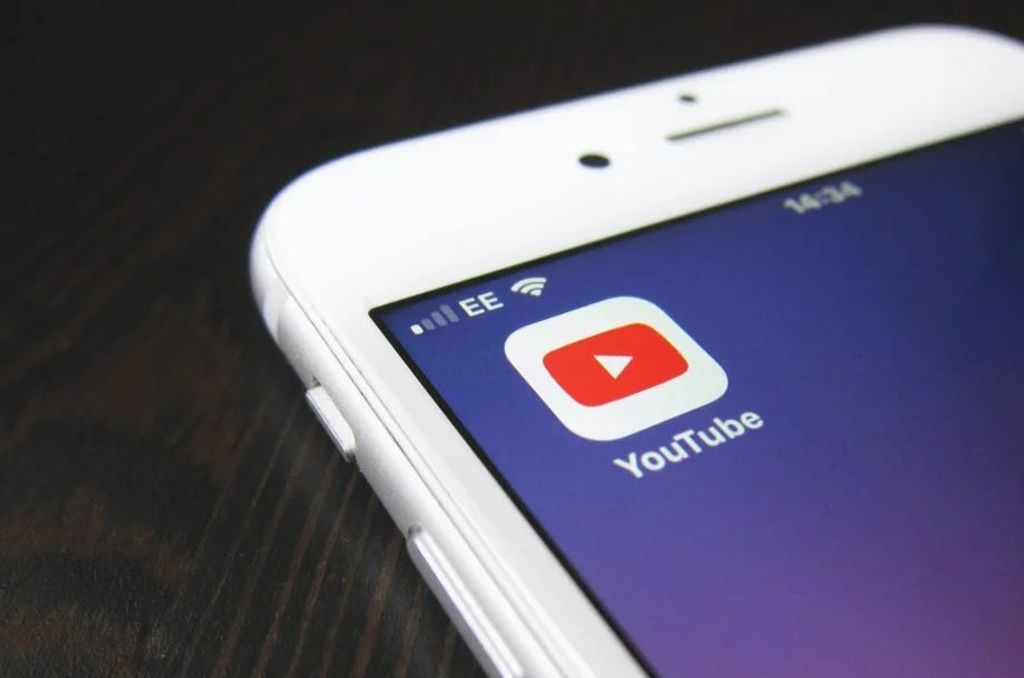YouTube has revolutionized the way we consume media, offering a vast library of content that ranges from entertainment to education. With its global reach and user-generated nature, YouTube has become a popular platform for both creators and viewers. However, like any other platform, it has its pros and cons. In this article, we will explore the advantages and disadvantages of YouTube and compare it to traditional media. Here are the key takeaways:
Key Takeaways
- YouTube offers a vast content library with a wide range of topics and genres.
- User-generated content allows for diverse perspectives and creativity.
- YouTube provides both entertainment and educational value to its viewers.
- The platform has a global reach, connecting people from all around the world.
- Quality control issues, copyright infringement, addictive nature, and privacy concerns are some of the drawbacks of YouTube.
What is YouTube?

History of YouTube
YouTube was founded in 2005 by three former PayPal employees: Chad Hurley, Steve Chen, and Jawed Karim. The idea for YouTube came about when the founders had difficulty sharing videos online and saw the need for a platform that made it easy for anyone to upload, share, and view videos. The first video ever uploaded to YouTube was titled ‘Me at the zoo’ and was uploaded by Jawed Karim on April 23, 2005. Since then, YouTube has grown exponentially and has become the go-to platform for video content.
YouTube’s Impact on Media Consumption
YouTube has revolutionized the way people consume media. With its vast collection of videos, users can easily access a wide range of content on various topics. Whether it’s tutorials, music videos, documentaries, or vlogs, YouTube offers something for everyone. This platform has become a go-to source for entertainment, information, and education.
Pros of YouTube

Vast Content Library
One of the major advantages of YouTube is its vast content library. With millions of videos uploaded every day, users have access to a wide range of content on various topics. Whether you’re looking for educational tutorials, entertaining vlogs, or informative documentaries, YouTube has it all. The platform caters to diverse interests and allows users to explore and discover new content easily.
User-generated Content
One of the key aspects of YouTube is its emphasis on user-generated content. Unlike traditional media platforms, where content is created and distributed by professionals, YouTube allows anyone to create and share videos. This democratization of content creation has led to a vast and diverse library of videos covering a wide range of topics and interests. From tutorials and product reviews to vlogs and music videos, YouTube offers a platform for individuals to express themselves and share their knowledge and experiences with the world.
Entertainment and Education
YouTube offers a vast content library that caters to a wide range of interests and preferences. From music videos and movie trailers to tutorials and educational lectures, there is something for everyone on the platform. Users can easily find and access content on various topics, making it a valuable resource for entertainment and education.
Global Reach
One of the key advantages of YouTube is its global reach. With over 2 billion monthly active users, YouTube has a vast audience from all around the world. This global reach allows content creators to connect with viewers from different countries, cultures, and backgrounds. It provides an opportunity for diverse perspectives and ideas to be shared and appreciated. Whether you’re a creator looking to reach a global audience or a viewer interested in exploring content from different parts of the world, YouTube offers a platform that transcends geographical boundaries.
Cons of YouTube

Quality Control
One of the main concerns with YouTube is the lack of quality control. Unlike traditional media platforms, YouTube does not have a strict vetting process for the content that is uploaded. This means that anyone can create and upload videos, regardless of their expertise or credibility. While this allows for a wide range of content to be available, it also means that there is a lot of low-quality and misleading information on the platform.
Without proper quality control measures in place, it can be difficult for viewers to discern between accurate and inaccurate information. This can lead to misinformation being spread and can potentially harm viewers who rely on YouTube for educational or instructional content. It is important for viewers to critically evaluate the content they consume on YouTube and seek out reliable sources for information.
Copyright Infringement
Copyright infringement is a significant issue on YouTube, with users often uploading content that violates intellectual property rights. This includes unauthorized use of copyrighted music, videos, and other creative works. YouTube has implemented various measures to address this problem, such as content ID systems and copyright strikes. However, these measures are not foolproof, and some infringing content may slip through the cracks. It is important for content creators to be aware of copyright laws and to properly attribute and obtain permission for any copyrighted material they use in their videos.
Addictive Nature
One of the major concerns associated with YouTube is its addictive nature. The platform is designed to keep users engaged and encourage them to spend more time watching videos. The autoplay feature, which automatically plays recommended videos after the current one ends, can be particularly addictive as it creates a continuous stream of content. This can lead to users spending hours on the platform, often at the expense of other activities or responsibilities.
Privacy Concerns
Privacy concerns are a significant drawback of using YouTube. As a platform that collects a vast amount of user data, there are concerns about how this data is being used and protected. Users may worry about their personal information being accessed by third parties or used for targeted advertising. Additionally, YouTube’s recommendation algorithm, which suggests videos based on a user’s viewing history, raises concerns about privacy and the potential for users to be trapped in filter bubbles. While YouTube has implemented privacy settings and policies to address these concerns, it is important for users to be aware of the potential risks and take steps to protect their privacy online.
YouTube vs Traditional Media

Accessibility and Convenience
One of the major advantages of YouTube is its accessibility and convenience. With just a few clicks, users can access a vast library of videos on almost any topic imaginable. Whether you’re looking for tutorials, entertainment, or educational content, YouTube has it all. The platform is available on multiple devices, including smartphones, tablets, and computers, making it easy to watch videos anytime, anywhere. Additionally, YouTube offers features like offline viewing and the ability to save videos for later, allowing users to enjoy their favorite content even without an internet connection.
Engagement and Interactivity
One of the key advantages of YouTube over traditional media is its high level of engagement and interactivity. Unlike traditional television or radio, YouTube allows viewers to actively participate in the content they consume. Users can like, comment, and share videos, creating a sense of community and fostering discussions. This level of engagement not only benefits the viewers but also the content creators, as they can receive feedback and interact directly with their audience. Additionally, YouTube offers features such as live streaming and interactive cards, which further enhance the interactive experience for both viewers and creators.
Monetization Opportunities
One of the major advantages of YouTube for content creators is the monetization opportunities it offers. YouTube allows creators to earn money through various channels, such as ad revenue, sponsorships, and merchandise sales. This provides an incentive for creators to produce high-quality and engaging content, as they can generate income from their videos. Additionally, YouTube’s Partner Program allows eligible creators to monetize their channels and access additional features and resources to grow their audience and revenue. However, it’s important to note that building a successful YouTube channel and earning a substantial income requires dedication, consistency, and a deep understanding of the platform’s algorithms and audience preferences.
Credibility and Trust
When it comes to credibility and trust, YouTube has faced its fair share of challenges. One of the main concerns is the spread of misinformation and fake news on the platform. With millions of videos being uploaded every day, it can be difficult to ensure the accuracy and reliability of the content. While YouTube has implemented measures to combat this issue, such as fact-checking and flagging misleading videos, it is still an ongoing battle.
Another aspect that affects credibility is the presence of sponsored content and influencer marketing. While these partnerships can provide valuable insights and recommendations, it is important for viewers to be aware of the potential bias and commercial interests involved.
To help users navigate through the vast amount of content, YouTube has introduced features like video recommendations and user ratings. These tools aim to provide users with a sense of credibility and trustworthiness by highlighting popular and well-received videos. However, it is ultimately up to the viewers to critically evaluate the content and make informed decisions.
In summary, while YouTube offers a wealth of information and entertainment, it is crucial for users to approach the platform with a critical mindset and be aware of the challenges related to credibility and trust.
Conclusion
In conclusion, YouTube offers numerous benefits and opportunities for both content creators and viewers. It provides a platform for creativity, entertainment, and education. However, it also has its drawbacks, such as the potential for misinformation and the negative impact on mental health. Despite these drawbacks, YouTube remains a popular and influential platform that continues to shape the way we consume and share content online.
Frequently Asked Questions
Can I watch YouTube videos offline?
Yes, you can download YouTube videos to watch offline using the YouTube app.
How can I create a YouTube channel?
To create a YouTube channel, sign in to YouTube with your Google account, go to your account settings, and click on ‘Create a channel’.
Is YouTube free to use?
Yes, YouTube is free to use. However, there is a premium subscription called YouTube Premium that offers additional features and removes ads.
Can I earn money from YouTube?
Yes, you can earn money from YouTube through the YouTube Partner Program by monetizing your videos with ads and through other revenue streams such as sponsored content and merchandise sales.
Are there age restrictions on YouTube?
Yes, YouTube has age restrictions. Some videos may be age-restricted and require users to be signed in and over a certain age to view them.
Can I upload copyrighted content to YouTube?
No, you should not upload copyrighted content to YouTube without proper authorization. Doing so may result in copyright infringement and your videos being taken down.




